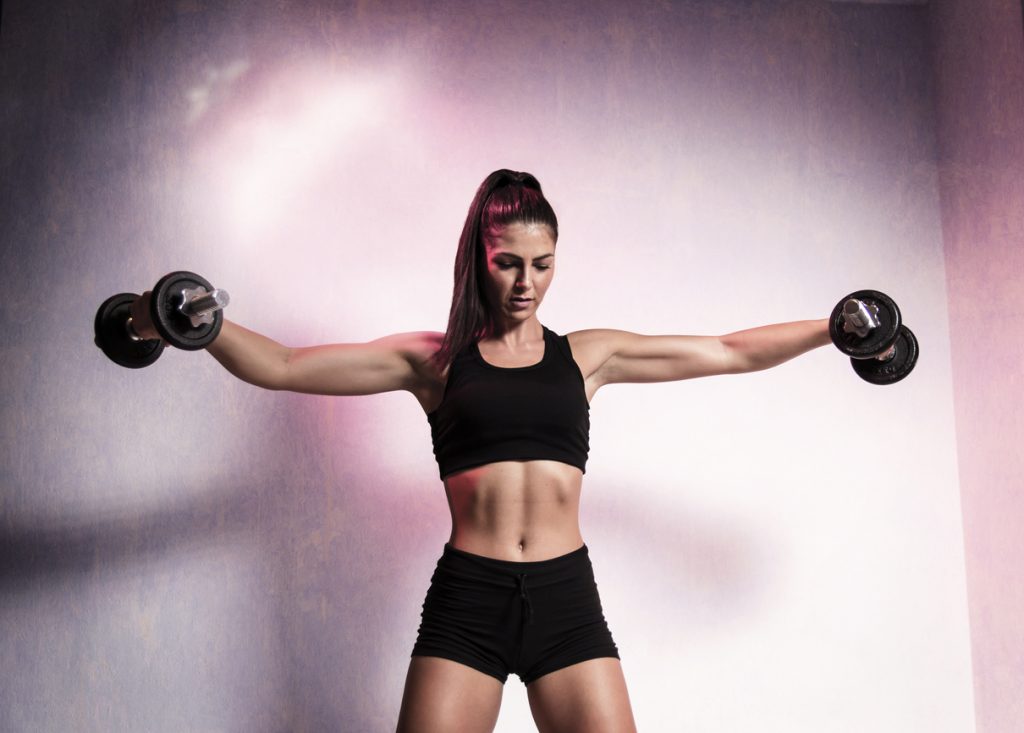For beginners, focusing on the execution of a movement is often difficult. Sometimes the movement is poorly executed. However, if done correctly, each movement will develop the muscles quickly and efficiently. One such movement is the dumbbell standing lateral raises, which are used to develop shoulder width.
Dumbbell standing lateral raises
Dumbbell standing lateral raises are used to give a great roundness to the shoulders which will lead to an increase in the build. This will accentuate the "V" shape, especially if the waistline is slimmed down at the same time.
In terms of muscle strengthening, by targeting the supraspinatus, lateral raises allow for a much stronger shoulder while protecting the joint, keeping the humeral head in place and minimising the risk of dislocation.
Lateral raises offer a wide range of movement and can be suitable for most athletes, provided that some basic guidelines are followed. Indeed, its effectiveness depends greatly on the quality of its execution.
First of all, it is important to avoid a perfect execution (at least "correct"), because like all the other exercises with weights, this movement requires a certain technique of realization: among other things, straight or leaning forward chest, tense or bent arms, neutral grip and well laterally against the hips, so many techniques which require a certain control.
You also need to know which muscles and joints are directly involved in this movement.
Muscles involved
Lateral lifts are part of what is known as the "abduction movement", i. e. they move the limbs away from the axis of the body (as opposed to the adduction movement which moves the limbs closer to the axis of the body).
This is a basic movement in bodybuilding. By raising the arms to the horizontal, the lateral (external) fascicle of the deltoid, the upper trapezius and the supraspinatus are strongly engaged.
How to perform the dumbbell lateral raises?
To perform the dumbbell lateral raises, it is important first of all to stand with your feet slightly apart in order to stabilize your body, your arms "straight" but with your elbows slightly bent (elbows not locked), a dumbbell in each hand, neutral grip, either in front of your body against your thigh, or laterally against your hips.
The arms should be raised laterally until they reach shoulder level (horizontal or just above).
It must be stressed that the chest must remain as straight as possible, but with a slight forward tilt. To do this, you must remain sheathed, belly in, chest out. It is absolutely necessary to control the load during all the movement by inspiring during the elevation.
It is also necessary to breathe in while lowering the load to the starting position.
Some tips to consider
To carry out the lateral raises with dumbbells, the first advice to be taken into account is not to put too light loads and even less too heavy!
- Do not fully extend your arms
- Conversely, do not bend the elbows too much (at right angles) because the overhang will be less and the stress on the deltoids will be less.
- Do not go beyond the horizontal at the end of the movement unless you want to increase the stress on the upper trapezius muscles.
- Raise the elbow slightly higher than the wrist. To do this, the correct load must be chosen to create some difficulty without altering the strict form of execution. It is advisable to use the "water pitcher" technique: start the movement with the palms facing each other in front of the thighs and throughout the lateral elevation. Then, perform an internal rotation of the wrists as if you wanted to serve a jug of water once the arm has reached the horizontal, almost completely stretched, palm facing the ground. (Warning: at the end of the movement, the little finger must be higher than the thumb)
The 4 variants of the lateral raises with dumbbells
There are 4 variations of dumbbell side raises:
- The seated variant to avoid any swinging movement and maximize the isolation of the targeted muscle
- The unilateral variant (one arm after the other) in order to have a much better concentration to obtain an exacerbated muscular connection and contraction
- Lateral raises with dumbbells on the pulley opposite in order to work "in continuous tension", to vary the angles of work as well as the techniques of intensities used, to experience different sensations and to practise the method of "muscular confusions"
- Lateral lifts with dumbbells supported on a bench in the "Arnold Schwarzenegger" or "Serge Nubret" style (on the ground). The start is much harder and no cheating is possible.
In order to develop the shoulders more quickly, it is necessary to think of varying slightly the position of the body and the wrist in order to find the most comfortable position and the one giving the most muscular sensation.


